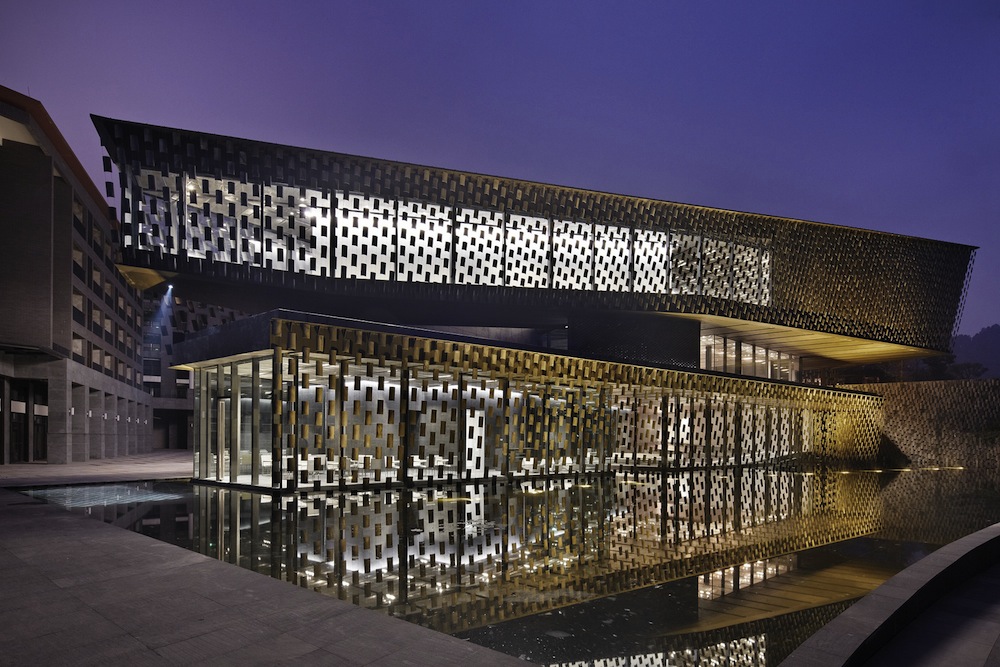Japanese architect Kengo Kuma’s museum pavilion, at the foot of Laojunshan mountain in Xinjin, China, is a gateway to a place held holy by Taoists. Xinjin Zhi Museum has many parallels to Wang Shu’s Ningbo Museum, which is also featured on CFile this week.
Similarly, Kengo incorporated traditional elements from local buildings; the curved, grey, terracotta dragon tile that has been in use in this region for over seven hundred years. But unlike the wa pan building method Wang Shu used in the Ningbo Museum, these tiles are not reclaimed but made for the project using traditional craft and local clay, “to pay tribute to Taoism and emphasize nature and balance.”
However, it has been announced that Kengo may incorporate wa pan into the Museum at the China Academy of Art in Xiangshan that is now under construction, by reusing clay tiles and stones from Hangzhou’s old house district so the body of the museum may appear, in the architects words, “as if the soil of the tea gardens were transformed into architecture”. CFile will keep you informed.
For the Xinjin project, Kengo levitated the tile in space; it is hung on wires so that it appears weightless and released from gravity. Clad in what the architect calls a “breathing facade of particles” (a design strategy that he uses frequently), the architecture merges with the local history and the surrounding nature. Further, the everyday, almost banal, character of tiles (an issue many locals criticized) gives the building an appropriate feeling of humility and modesty, more cottage than palace, despite its scale.
The traditional, local tiles are stretched tautly around the building on wire strings, shading the glazed exterior from direct sunlight. On the east side, a large, single tile screen is vertically twisted to correspond with the dynamism of the road in front. The façade for the north side is static and flat, which faces the pedestrians’ square. Thus, the tile screen transforms itself from face to face, and wraps up the building “like a single cloth.”
Garth Clark is Chief Editor of CFile







Architect Kengo Kuma’s Xinjin Zhi Museum in Cheng Du, China. Above images courtesy of Kengo Kama & Associates.

A traditional, local building with dragon tile

Drawing of tiles for the Xinjin Zhi Museum by Kengo Kuma
Visit Kengo Kuma and Associates


Wow! Let’s go there?